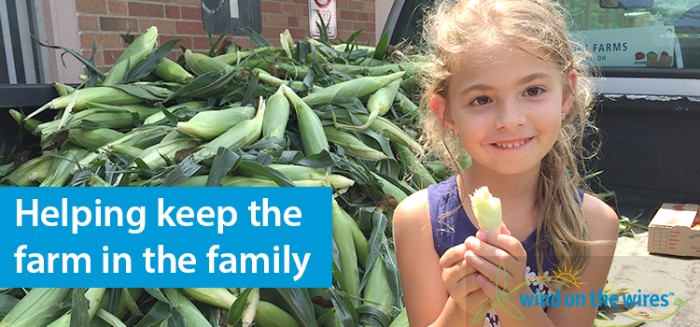Corn, beans and wind energy? Farmers are diversifying with wind
 | Kelley Welf, Communications Director |

 | Kelley Welf, Communications Director |
Memorial Day is a good time to reflect on the fundamental rights of every American to life, liberty and the pursuit of happiness. Liberty means freedom. We hear a lot about the freedom of the press, religion, speech and many others. For our farmers, however, freedom also means the ability to earn an honest living from their land.
According to the US Department of Agriculture, 97 percent of all farms in the United States are family-owned. The Minnesota Farm Bureau has recognized more than 10,000 Century Farms, which means the farm is at least 50 acres and has been in continuous family ownership for at least 100 years. Another 33 Sesquicentennial Farms (150 years) were recognized last year. This kind of longevity in our state’s farming history is impressive. Clearly, farmers have a deeply held connection to their land.
The trend of family-owned farms in Minnesota, however, is declining. Since 1980 when there were 104,000 farms in the state, family-owned farms have declined 30 percent to 73,000 farms in 2016. Low crop prices and the aging of our farmers are two factors contributing to the decline.
Being a farmer requires determination and a desire for self-sufficiency. It is also a very brave profession. A farmer’s livelihood depends on his ability to effectively manage the whims of the weather and fluctuating crop prices – neither of which can be controlled – to produce a commodity that can be sold to provide financial income and stability for the family.
Diversification can be an effective way to bring some financial security to a farmer and can help keep the farm in the family. It’s common sense for farmers to add different commodities to their operation – they can ride out a bad year of corn prices because the livestock prices are good enough. Farmers today are beginning to add a new way to diversify their farm without taking on any additional work or capital. By harvesting the wind, farmers have supplemented the family’s income with a drought-resistant, cash crop that produces steady income for a generation. In Minnesota, $10 - $15 million annually is paid to landowners for hosting turbines on their property. Minnesota farmer Jim Nichols calls the turbine on his farm a “combine in the sky.” But, he says it’s better because “the wind turbine harvests all year long and doesn’t sit in the shed 11 months out of the year.”
Farmers around the country agree that harvesting wind energy is a big help. Dick Kirksey, from Clay County, Iowa, spoke at a local zoning commission meeting and remarked, “We have generations of farmers in our community. We all know the challenge of agriculture, considering weather, markets, and production. For some farmers, it’s becoming a financial burden to bring children into the operation. Now wind energy is offering these families an additional way to help support future generations of farmers.”
Minnesota also has a Wind Energy Production Tax that is paid by wind farm owners to the county based on the production of the turbines. This year, more than $12 million is going to 25 rural counties. Since 2004, more than $94 million in production taxes have been paid to the counties and townships where the wind projects are hosted. Best of all, the local officials choose how best to use this revenue. Most often, these funds are used in ways that benefit everyone, such as road and bridge improvements, paying off debt, and providing tax relief for residents. That means more money in everyone’s pocket.
Farmers take great pride in being able to make a living for their family from the very land that may have been in their family for generations. And to also serve their country by growing food for the nation only adds to their pride. When a farmer harvests the wind, he can take pride in being able to provide a degree of national security as well. Because, when America produces its own energy, we become less dependent upon foreign countries. And that, friends, creates another freedom – energy freedom.
Subscribe to our newsletter for the latest on energy & our work
This Memorial Day, we gratefully remember those veterans who lost their lives in service to our country, fighting for the freedoms we enjoy every single day. And let’s also thank our farmers for their dedication to this land of the free and home of the brave.
Wind energy. It’s just smart for Minnesota’s family farmers.
Want to learn more about renewable energy? Sign up for our monthly "Renewable Champions" newsletter to get the latest stories and resources about the Midwest's transition to renewable energy.